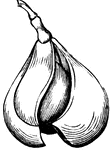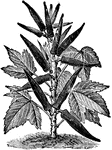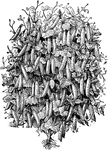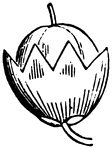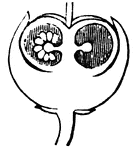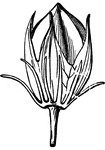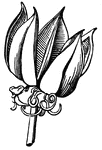Clipart tagged: ‘pod’

Acacia
"An Egyptian tree; the bark and pods are frequently used in tanning and the aqueous extract of the wood…

Acacia Salicina Variation Wayae
The acacia salicina variation wayae shrub is eight feet tall. The shrub blooms sparingly at various…

Acacia Verticillata
The common name of acacia verticillata is whorl-leaved acacia. It is a spreading shrub or small tree…

Astragalus
"A genus of plans of the natural order Leguminosae, sub-order Papilionaceae. The pod is more or less…
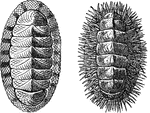
Chitonidæ
They differ from all other mollusks in having a bilaterally symmetrical covered with a number of seperate…
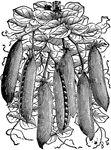
Rawson's Clipper
A species of peas that profusely covered with pods. The pods have one of the sweetest flavors of the…

Funicle of Lunaria Pod
"Funicle. In botany, The stalk of an ovule or seed. Pod of Lunaria. a, a, a, funicles." -Whitney, 1911
Pod of Garden Balsam
The garden balsam pod is explosive. It has five carpels and very thin partitions.

Honey Locust
"Branch and Pod of Honey-locust (Gleditschia triacanthos). GLEDITSCHIA. A genus of leguminous thorny…

Kapok
A pod of the Kapok (Ceiba pentandra) is a tree in the Malvaceae family of mallows that produces a cotton-like…
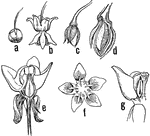
Milkweed Stages
"Milkweed (Asclepias sp.). a, flower-bud; b, flower; c, very young pod; d, older pod in section, showing…

Chick Pea
It grows wild around the shores of the Mediterranean and many parts of the East, producing a puffy pod,…
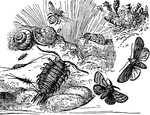
Types of Seashore Life
16. Andrena cineraria, 17. Helix virgata, 18. Pod-lover moth, 19. Anurida maritima, 20. Machillis maritima,…

Shepherd's Purse
"Plant with Flowers and Fruits of Shepherd's-purse" (Capsella bursa-pastoris) "a, flower; b, a pod."…
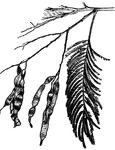
Silver Wattle
Silver wattle is the common name of acacia decurrens variation dealbata. The tree is fifty or more feet…

Pea Weevil
"Pea weevil; adult. The pea weevil (Bruchus) is often found in peas in its larval state during summer…

Pea Weevil
"Pea weevil; pupa. The pea weevil (Bruchus) is often found in peas in its larval state during summer…
